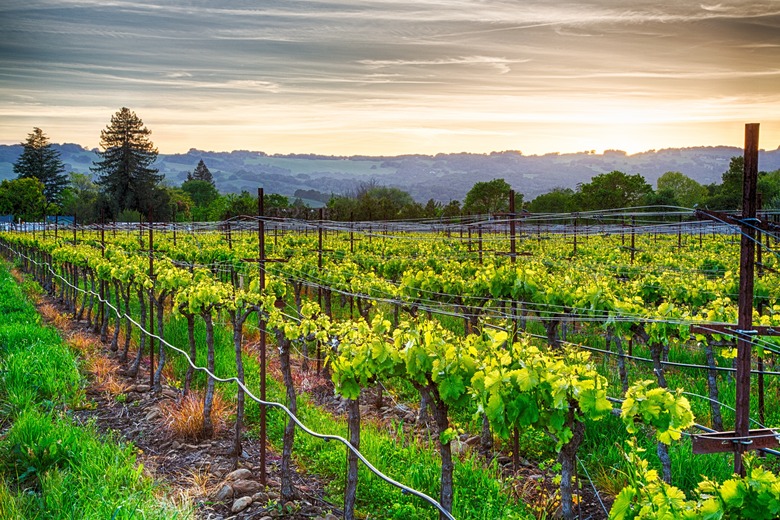A Venerable Vineyard With An Extraordinary History
Sometimes a winery's story is so compelling it just begs to be told. Case in point: Buena Vista Winery, one of the oldest in California, with a history so colorful it could have been the stuff of silent film: Hungarian founder Agoston Haraszthy, the self-described "Count of Buena Vista," immigrates to America cloaked in rumors, serves a couple of years as San Diego County Sheriff, then heads north to buy up some prime land in Sonoma and stake his claim to "purple gold." The Count proves to be a talented vintner and the winery enjoys early success. Alas, the restless Hungarian abandons his winery for adventure in Nicaragua,where he (oh, no!) allegedly perishes crossing a crocodile-infested river.
Like the distressed maiden tied to the railroad tracks in the aforementioned silent films, Buena Vista survives the Depression, Prohibition, and a phylloxera infestation before finally being rescued in 1949 by Frank and Antonia Bartholomew and their legendary winemaker, André Tchelistcheff. Together, the trio work to restore the vineyard to its former glory. In 2011, Buena Vista is acquired by the renowned Boisset family from Burgundy, under whom it continues to produce world-class wines.
Whew. Heady stuff.
Buena Vista today offers a wide variety of wines at every price point; the following are some of its entry-level offerings.
2014 Buena Vista Carneros Chardonnay ($20)
This is a classic modestly priced chardonnay — neither especially oaky nor buttery, it hits that everyman sweet spot for folks who just want a good, food-friendly wine to share with friends. Pale gold with a slight glint of green in the glass, it has aromas of white flower and a bit of honeydew melon in the nose, giving way to pineapple, ripe apple, a hint of oak and vanilla and some soft citrus mid-palate with a pleasant, medium-long acidic finish. Grapes for this wine were sourced from four vineyards, pressed while cool, barrel-fermented with secondary malolactic fermentation, and aged in French and Hungarian oak for 10 months. I'd drink this wine with any seafood in a creamy or buttery sauce, a rich quiche, nutty Gruyère, or full-fat cheeses. It's also quite nice on its own.
2013 Buena Vista The Count Founder's Red Wine ($20)
This is a very nicely structured, easy-drinking blend of mostly merlot with some syrah amping up the body and and bit of zinfandel contributing brightness and juiciness. A very pretty deep cherry red in the glass with more of that cherry and black currant on the palate, the wine offers a soft, round mouthfeel and a gentle tannin finish. Decidedly food-friendly, it is a very likeable wine. I'd pair it with roast chicken, pastas, charcuterie, cassoulet, and sandwiches stuffed with cured meats. I'd also take it on a picnic or drink it on its own.
Buena Vista Carneros Pinot Noir 2013 ($25)
A very pretty bright garnet in the glass, this lively pinot has a seductive nose, full dark berry flavor, with a bit of clove, a whiff of tobacco, and a bright, medium-long acidic finish. Interesting structure with notable tannins and a dusting of welcome dirt in the finish. As with the Buena Vista chardonnay, grapes for this wine have enjoyed the cooler climate of Carneros. I'd match this wine with rich bean soups, smoked ham, rosemary-crusted lamb, and gutsy, rather than delicate, fish, such as seared balsamic- and mustard-basted salmon.
2012 The Sheriff of Buena Vista ($40)
Named for Buena Vista founder Agoston Haraszthy, in honor of his brief service as sheriff of San Diego County, the 2012 Sheriff of Buena Vista is a big, arresting blend of 32 percent petite sirah, 26 percent syrah, 20 percent petit verdot, 17 percent cabernet sauvignon, and 5 percent grenache. A dark-red-fruit-forward nose heralds blackberry, black cherry and cocoa nib on the palate. The addition of petit verdot and petite sirah contribute to the long, integrated tannin finish. This wine really opens up with a bit of time or decanting, giving your guests ample time to admire the three-dimensional sheriff's badge firmly affixed to the label—like the wine, not subtle, but great fun. Given the number of varietals that go into the mix, it's not surprising to learn that the fruit was sourced from all over Sonoma: Rockpile, Dry Creek, and the Sonoma and Alexander valleys all contributed. This wine demands bold and flavorful food; don't be afraid to drink it with big chunks of grilled meat, hearty stews, or stinky cheeses, such as Stilton or Époisses.
